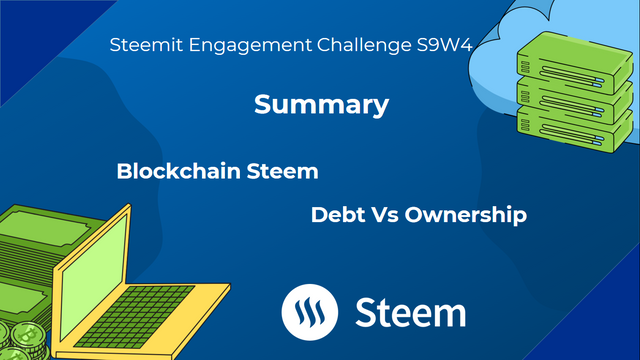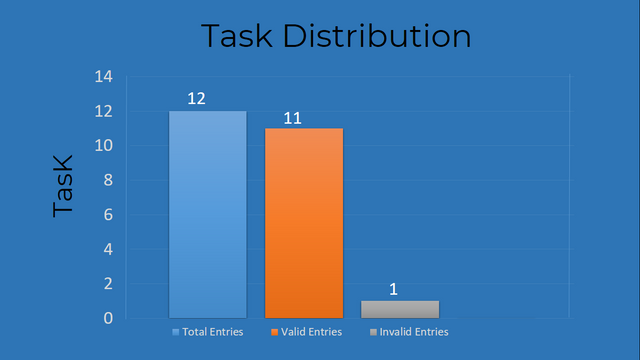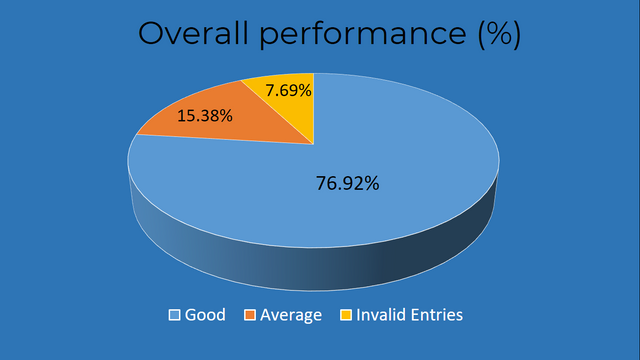
Summary:
This article provides an overview of the concepts of debt and ownership within the context of the Steem blockchain. It explores how these concepts function and interact in the Steem ecosystem, highlighting the advantages and potential risks associated with each.
Statistics of the Participation
In this fourth week there were 11 valid entries and one invalid entry.
Valid Entries Invalid Entries Plagiarized Content
11 1 0
This can be further shown in the bar chart below.

The graph below shows that 76.92% of the participants did good assignments and 15.38% only completed their assignment. And one invalid task.

For the selection process of the three best publications in our community, we took into account the following:
Highly rated posting. Quality of performance.
The quality of engagement interaction with other users.
After doing a review of all entries received, the top 3 posts are:
No Autor Link
1 @suboohi Link
2 @ashkhan Link
3 @marianaceleste Link
Article:
The Steem blockchain has revolutionized the way we perceive ownership and debt within the realm of digital assets. Understanding the dynamics between debt and ownership is crucial for participants in the Steem community to navigate this innovative blockchain effectively.
Debt, in the context of Steem, refers to the borrowed Steem Power (SP) from other users. Steem Power is a token that represents the influence a user has on the platform. By borrowing SP, users can increase their voting power and have a greater say in determining the distribution of rewards. However, it is essential to recognize that debt in the Steem ecosystem comes with certain risks. Users who borrow SP must pay interest to the lenders, typically in the form of curation rewards. Additionally, if the borrowed SP is not used wisely or the borrowed funds are not paid back, it can lead to negative consequences, such as a decrease in reputation or loss of potential rewards.
On the other hand, ownership in the Steem blockchain refers to holding and staking one's own Steem Power. By owning SP, users have a direct and permanent influence on the platform. They can curate content, vote for witnesses, and participate in governance decisions. Owning SP also entitles users to earn curation rewards, which are proportional to the amount of SP held. Ownership provides stability and long-term benefits, as users are not bound by the obligations and risks associated with borrowing.
Both debt and ownership play crucial roles in the Steem ecosystem, and understanding the balance between the two is vital. Borrowing SP can be beneficial for users looking to increase their influence and actively participate in the platform. However, it requires careful consideration of the associated risks and responsibilities. On the other hand, ownership empowers users with a sense of permanence and stability, allowing them to make long-term decisions and enjoy the rewards of their investments.
To maintain a healthy Steem ecosystem, it is essential for users to find a balance between debt and ownership. Leveraging borrowed SP can be a strategic move if done responsibly, while ownership ensures stability and long-term rewards. Users should assess their goals, risk tolerance, and available resources before deciding whether to borrow or stake their SP.
In conclusion, the Steem blockchain offers participants the unique opportunity to navigate the realms of debt and ownership. Borrowing SP can provide short-term advantages, but it comes with risks that users must be mindful of. Ownership, on the other hand, grants stability and permanent influence over the platform. Finding the right balance between debt and ownership is key to maximizing the benefits of participating in the Steem ecosystem.